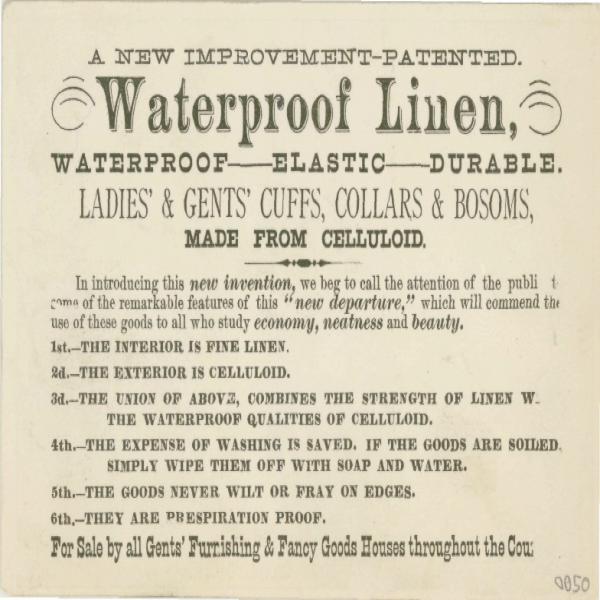No More Washee Washee
Original


Background Notes
This is a trade card for "a new improvement" in waterproof linen, which meant that the fabric did not need to be laundered when it became dirty. Instead, the card advertised that owners could just "wipe them off with soap and water."
The image on the front of the trade card plays on stereotypes of Chinese men as well as on some Americans' anti-Chinese sentiments. A message along the bottom of the image reads, "No more washee washee - Meligan men wear celluloid collar and cuffs." It depicts smiling white men in their white linen shirts walking out of the water on to dry shore. In the background, Chinese laundrymen are "Off to China" in the wash tubs they had used to launder shirts.
Trade cards were a popular form of advertising during the eighteenth and nineteenth centuries. Most trade cards provide the name and address of the proprietor and the variety of services available, sometimes with vignettes to describe items sold or the place of business. Although there is no concrete definition of a trade card, it is generally a printed notice of goods for sale or services available for the public. Often printed on small hand or "card" presses, trade cards could be created quickly and cheaply. This made trade cards affordable to both the big and small business owners.